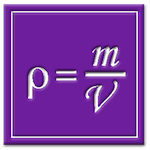Find the Mass of Cygnus X-1


You walk into astronomy class one day and find the following question on the board: "What is the mass of Cygnus X-1?" Your class has been learning about binary stars, orbits, and the lifecycle of stars, and you already know that Cygnus X-1 is a well-known X-ray source in our galaxy.
Once everyone is in class, your professor says that the first person to solve this question using astronomical methods and data (instead of looking up the answer on the Internet or in a book) will be excused from homework for the rest of the current unit – a very tempting prospect, since you could use that extra time to sleep!
Your professor tells you that the resources you can use include the University's introductory astronomy equipment (for example, an optical telescope), as well as astronomical data available in print and on-line. Use your understanding of the laws of physics to select an experiment which will help you to find the answer.
You immediately think of three possible approaches:
- Use Newton's law of universal gravitation to solve directly for the mass of Cygnus X-1.
- Use Cygnus X-1's volume and density to deduce its mass.
- Use Kepler's Laws to estimate the mass of Cygnus X-1.
At least one of the above methods will give you the correct answer. Which one do you want to try?







